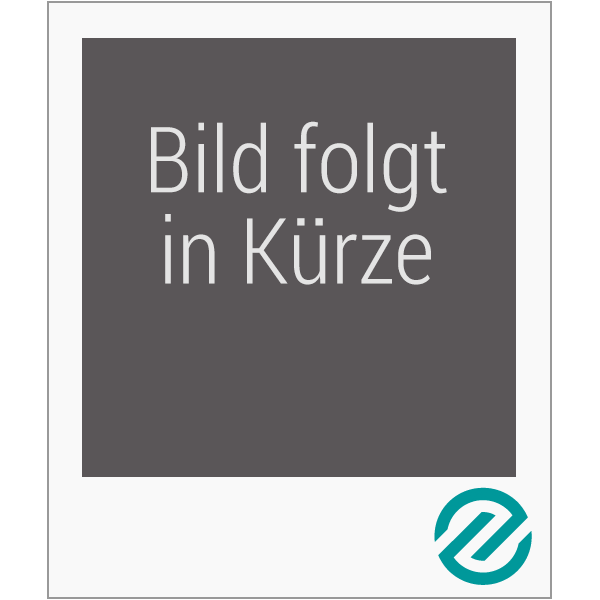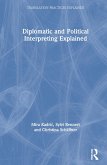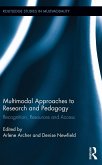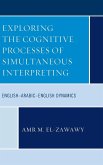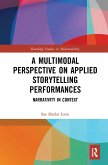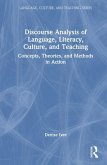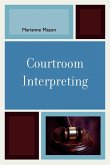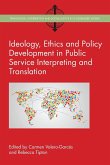- Gebundenes Buch
- Merkliste
- Auf die Merkliste
- Bewerten Bewerten
- Teilen
- Produkt teilen
- Produkterinnerung
- Produkterinnerung
This book offers an in-depth exploration of diplomatic interpreting as a complex form of multimodal interaction, drawing on examples from China-U.S. diplomatic interpreting activities to demonstrate the nuances of meaning transfer across modes and contexts.
Andere Kunden interessierten sich auch für
![Diplomatic and Political Interpreting Explained Diplomatic and Political Interpreting Explained]() Mira Kadri¿Diplomatic and Political Interpreting Explained195,99 €
Mira Kadri¿Diplomatic and Political Interpreting Explained195,99 €![Multimodal Approaches to Research and Pedagogy Multimodal Approaches to Research and Pedagogy]() Multimodal Approaches to Research and Pedagogy209,99 €
Multimodal Approaches to Research and Pedagogy209,99 €![Exploring the Cognitive Processes of Simultaneous Interpreting Exploring the Cognitive Processes of Simultaneous Interpreting]() Amr M. El-ZawawyExploring the Cognitive Processes of Simultaneous Interpreting132,99 €
Amr M. El-ZawawyExploring the Cognitive Processes of Simultaneous Interpreting132,99 €![A Multimodal Perspective on Applied Storytelling Performances A Multimodal Perspective on Applied Storytelling Performances]() Soe Marlar LwinA Multimodal Perspective on Applied Storytelling Performances63,99 €
Soe Marlar LwinA Multimodal Perspective on Applied Storytelling Performances63,99 €![Discourse Analysis of Language, Literacy, Culture, and Teaching Discourse Analysis of Language, Literacy, Culture, and Teaching]() Denise IvesDiscourse Analysis of Language, Literacy, Culture, and Teaching195,99 €
Denise IvesDiscourse Analysis of Language, Literacy, Culture, and Teaching195,99 €![Courtroom Interpreting Courtroom Interpreting]() Marianne MasonCourtroom Interpreting64,99 €
Marianne MasonCourtroom Interpreting64,99 €![Ideology, Ethics and Policy Development in Public Service Interpreting and Translation Ideology, Ethics and Policy Development in Public Service Interpreting and Translation]() Ideology, Ethics and Policy Development in Public Service Interpreting and Translation42,99 €
Ideology, Ethics and Policy Development in Public Service Interpreting and Translation42,99 €-
-
-
This book offers an in-depth exploration of diplomatic interpreting as a complex form of multimodal interaction, drawing on examples from China-U.S. diplomatic interpreting activities to demonstrate the nuances of meaning transfer across modes and contexts.
Hinweis: Dieser Artikel kann nur an eine deutsche Lieferadresse ausgeliefert werden.
Hinweis: Dieser Artikel kann nur an eine deutsche Lieferadresse ausgeliefert werden.
Produktdetails
- Produktdetails
- Verlag: Taylor & Francis Ltd
- Seitenzahl: 288
- Erscheinungstermin: 22. August 2025
- Englisch
- Abmessung: 229mm x 152mm
- Gewicht: 453g
- ISBN-13: 9781032583327
- ISBN-10: 1032583320
- Artikelnr.: 72880239
- Herstellerkennzeichnung
- Libri GmbH
- Europaallee 1
- 36244 Bad Hersfeld
- gpsr@libri.de
- Verlag: Taylor & Francis Ltd
- Seitenzahl: 288
- Erscheinungstermin: 22. August 2025
- Englisch
- Abmessung: 229mm x 152mm
- Gewicht: 453g
- ISBN-13: 9781032583327
- ISBN-10: 1032583320
- Artikelnr.: 72880239
- Herstellerkennzeichnung
- Libri GmbH
- Europaallee 1
- 36244 Bad Hersfeld
- gpsr@libri.de
Xingqiao Cen is a lecturer at the Ningbo University of Technology. She completed her PhD at the School of Education and English at the University of Nottingham, Ningbo, China. Derek Irwin is Associate Professor in Applied Linguistics at the School of Education and English at the University of Nottingham, Ningbo, China.
List of Figures
List of Tables
List of Examples
1. Introduction
1.1 Overview
1.2 Consecutive interpreting in China-U.S. diplomatic talks
1.3.1 From language service to multimodal interaction
1.3.2 From semiotic resources to semiotic system
1.4 Research nucleus and questions
1.5 Research significance
2.1 Introduction
2.2 Process-oriented interpreting studies
2.2.1 Interpreting as a sense-making process
2.2.2 Interpreting as social interaction
2.3 Product-oriented interpreting studies
2.3.3
2.4 Diplomatic interpreting as professional practice
2.4.1
2.4.2
2.4.3
2.5 Chapter review
3. Interpreting as a multimodal cross-linguistic event
3.1 Introduction
3.2 Conceptual framework
3.2.1 From one-dimensional to multi-dimensional research
3.2.1.1 Multimodal design and multimodal semiotic resources
3.2.1.2 Inter-semiotic relations in a multimodal hierarchy
3.2.2 SF-MDA: A panoramic view on meaning transfer as recontextualization
3.2.2.1 Field, tenor and mode shift in relation to the context
3.2.2.1.1 Experiential Meaning and experiential metafunction
3.2.2.1.2 Interpersonal Meaning and Interpersonal Metafunction
3.2.2.1.3 Textual Meaning through Cohesion
3.2.2.2 SFL application on bilateral interpreting
3.2.3 Interpreting from decontextualization to recontextualization
3.2.3.1 The process-oriented approach and the need for a cognitive theory
of translation
3.2.3.2 Gap between multimodal production and perception
3.2.3.3 Decontextualization and recontextualization
3.3 Research design and instrument
3.3.1 Research design
3.3.2 Data collection
3.3.3 Multimodal classification, annotation and transcription
3.3.3.1 Categories of Annotations
3.3.3.2 Data classification
3.3.3.3 Data transcription and annotation conventions
3.3.4 Data presentation
4 Multimodal affordances and meaning recontextualization
4.1 Multimodal features in diplomatic talks
4.1.1 Linguistic features in diplomatic settings
4.1.2 Aural features in diplomatic settings
Break index
4.1.2.2 Tones and intonations
4.1.2.3 Filler words
4.1.2.4 Rate of speech
4.1.2.5 Self-repairs
4.1.3 Visual and spatial features in diplomatic settings
4.1.4 Gestural features in diplomatic settings
4.1.4.1 Facial expressions
4.1.4.2 Gaze
4.1.4.3 Hand gesture
4.1.4.4 Posture
4.1.5 Multimodal hierarchy in contextual reconfiguration
4.1.6 Synopsis on multimodal semiotic use in China-U.S. bilateral talks
4.2 Meaning recontextualization: towards a multimodal interpretive model
4.2.1 Introduction
4.2.2 MIM-a comprehensive toolkit
4.2.3 Meaning recontextualization patterns in China-U.S. diplomatic
interpreting
4.2.3.1 Addition
4.2.3.2 Omission
4.2.3.3 Substitution
4.2.3.4 Transformation
4.3 Chapter review
5. Multimodal affordances in representational meaning transfer
5.1 Experiential meaning realization and recontextualization by linguistic
mode
5.1.1 Experiential meaning shift by addition
5.1.2 Experiential meaning shift via transformation
5.1.3 Experiential meaning shift via substitution
5.1.4 Experiential meaning shift caused by misinterpretation
5.2 Representational meaning realization and recontextualization by aural
mode
5.3 Representational meaning realization and recontextualization by visual
and spatial mode
5.4 Representational meaning realization and recontextualization by
gestural mode
5.5 Representational meaning realization and recontextualization patterns
6. Interpersonal meaning realization and recontextualization
6.2 Interactive meaning realization and recontextualization by aural mode
6.3 Interactive meaning realization and recontextualization by visual and
spatial mode
6.4 Interactive meaning realization and recontextualization by gestural
mode
6.5 Interpersonal meaning realization and recontextualization by multimodal
synergies
6.6 Interactive meaning realization and recontextualization patterns
7. Multimodal affordances in compositional meaning transfer
7.1 Textual meaning realization and recontextualization by linguistic mode
7.2 Compositional meaning realization and recontextualization by aural mode
7.3 Compositional meaning realization and recontextualization by visual and
spatial mode
7.4 Compositional meaning realization and recontextualization by gestural
mode
7.5 Multimodal synergies in compositional meaning realization and
recontextualization
7.6 Compositional meaning realization and recontextualization patterns
8. Conclusion
8.1 Summary of the current research
8.2 Contributions
8.2.1 Theoretical contribution
8.2.2 Practical contribution
8.3 Implications
References
Appendix
Index
List of Tables
List of Examples
1. Introduction
1.1 Overview
1.2 Consecutive interpreting in China-U.S. diplomatic talks
1.3.1 From language service to multimodal interaction
1.3.2 From semiotic resources to semiotic system
1.4 Research nucleus and questions
1.5 Research significance
2.1 Introduction
2.2 Process-oriented interpreting studies
2.2.1 Interpreting as a sense-making process
2.2.2 Interpreting as social interaction
2.3 Product-oriented interpreting studies
2.3.3
2.4 Diplomatic interpreting as professional practice
2.4.1
2.4.2
2.4.3
2.5 Chapter review
3. Interpreting as a multimodal cross-linguistic event
3.1 Introduction
3.2 Conceptual framework
3.2.1 From one-dimensional to multi-dimensional research
3.2.1.1 Multimodal design and multimodal semiotic resources
3.2.1.2 Inter-semiotic relations in a multimodal hierarchy
3.2.2 SF-MDA: A panoramic view on meaning transfer as recontextualization
3.2.2.1 Field, tenor and mode shift in relation to the context
3.2.2.1.1 Experiential Meaning and experiential metafunction
3.2.2.1.2 Interpersonal Meaning and Interpersonal Metafunction
3.2.2.1.3 Textual Meaning through Cohesion
3.2.2.2 SFL application on bilateral interpreting
3.2.3 Interpreting from decontextualization to recontextualization
3.2.3.1 The process-oriented approach and the need for a cognitive theory
of translation
3.2.3.2 Gap between multimodal production and perception
3.2.3.3 Decontextualization and recontextualization
3.3 Research design and instrument
3.3.1 Research design
3.3.2 Data collection
3.3.3 Multimodal classification, annotation and transcription
3.3.3.1 Categories of Annotations
3.3.3.2 Data classification
3.3.3.3 Data transcription and annotation conventions
3.3.4 Data presentation
4 Multimodal affordances and meaning recontextualization
4.1 Multimodal features in diplomatic talks
4.1.1 Linguistic features in diplomatic settings
4.1.2 Aural features in diplomatic settings
Break index
4.1.2.2 Tones and intonations
4.1.2.3 Filler words
4.1.2.4 Rate of speech
4.1.2.5 Self-repairs
4.1.3 Visual and spatial features in diplomatic settings
4.1.4 Gestural features in diplomatic settings
4.1.4.1 Facial expressions
4.1.4.2 Gaze
4.1.4.3 Hand gesture
4.1.4.4 Posture
4.1.5 Multimodal hierarchy in contextual reconfiguration
4.1.6 Synopsis on multimodal semiotic use in China-U.S. bilateral talks
4.2 Meaning recontextualization: towards a multimodal interpretive model
4.2.1 Introduction
4.2.2 MIM-a comprehensive toolkit
4.2.3 Meaning recontextualization patterns in China-U.S. diplomatic
interpreting
4.2.3.1 Addition
4.2.3.2 Omission
4.2.3.3 Substitution
4.2.3.4 Transformation
4.3 Chapter review
5. Multimodal affordances in representational meaning transfer
5.1 Experiential meaning realization and recontextualization by linguistic
mode
5.1.1 Experiential meaning shift by addition
5.1.2 Experiential meaning shift via transformation
5.1.3 Experiential meaning shift via substitution
5.1.4 Experiential meaning shift caused by misinterpretation
5.2 Representational meaning realization and recontextualization by aural
mode
5.3 Representational meaning realization and recontextualization by visual
and spatial mode
5.4 Representational meaning realization and recontextualization by
gestural mode
5.5 Representational meaning realization and recontextualization patterns
6. Interpersonal meaning realization and recontextualization
6.2 Interactive meaning realization and recontextualization by aural mode
6.3 Interactive meaning realization and recontextualization by visual and
spatial mode
6.4 Interactive meaning realization and recontextualization by gestural
mode
6.5 Interpersonal meaning realization and recontextualization by multimodal
synergies
6.6 Interactive meaning realization and recontextualization patterns
7. Multimodal affordances in compositional meaning transfer
7.1 Textual meaning realization and recontextualization by linguistic mode
7.2 Compositional meaning realization and recontextualization by aural mode
7.3 Compositional meaning realization and recontextualization by visual and
spatial mode
7.4 Compositional meaning realization and recontextualization by gestural
mode
7.5 Multimodal synergies in compositional meaning realization and
recontextualization
7.6 Compositional meaning realization and recontextualization patterns
8. Conclusion
8.1 Summary of the current research
8.2 Contributions
8.2.1 Theoretical contribution
8.2.2 Practical contribution
8.3 Implications
References
Appendix
Index
List of Figures
List of Tables
List of Examples
1. Introduction
1.1 Overview
1.2 Consecutive interpreting in China-U.S. diplomatic talks
1.3.1 From language service to multimodal interaction
1.3.2 From semiotic resources to semiotic system
1.4 Research nucleus and questions
1.5 Research significance
2.1 Introduction
2.2 Process-oriented interpreting studies
2.2.1 Interpreting as a sense-making process
2.2.2 Interpreting as social interaction
2.3 Product-oriented interpreting studies
2.3.3
2.4 Diplomatic interpreting as professional practice
2.4.1
2.4.2
2.4.3
2.5 Chapter review
3. Interpreting as a multimodal cross-linguistic event
3.1 Introduction
3.2 Conceptual framework
3.2.1 From one-dimensional to multi-dimensional research
3.2.1.1 Multimodal design and multimodal semiotic resources
3.2.1.2 Inter-semiotic relations in a multimodal hierarchy
3.2.2 SF-MDA: A panoramic view on meaning transfer as recontextualization
3.2.2.1 Field, tenor and mode shift in relation to the context
3.2.2.1.1 Experiential Meaning and experiential metafunction
3.2.2.1.2 Interpersonal Meaning and Interpersonal Metafunction
3.2.2.1.3 Textual Meaning through Cohesion
3.2.2.2 SFL application on bilateral interpreting
3.2.3 Interpreting from decontextualization to recontextualization
3.2.3.1 The process-oriented approach and the need for a cognitive theory
of translation
3.2.3.2 Gap between multimodal production and perception
3.2.3.3 Decontextualization and recontextualization
3.3 Research design and instrument
3.3.1 Research design
3.3.2 Data collection
3.3.3 Multimodal classification, annotation and transcription
3.3.3.1 Categories of Annotations
3.3.3.2 Data classification
3.3.3.3 Data transcription and annotation conventions
3.3.4 Data presentation
4 Multimodal affordances and meaning recontextualization
4.1 Multimodal features in diplomatic talks
4.1.1 Linguistic features in diplomatic settings
4.1.2 Aural features in diplomatic settings
Break index
4.1.2.2 Tones and intonations
4.1.2.3 Filler words
4.1.2.4 Rate of speech
4.1.2.5 Self-repairs
4.1.3 Visual and spatial features in diplomatic settings
4.1.4 Gestural features in diplomatic settings
4.1.4.1 Facial expressions
4.1.4.2 Gaze
4.1.4.3 Hand gesture
4.1.4.4 Posture
4.1.5 Multimodal hierarchy in contextual reconfiguration
4.1.6 Synopsis on multimodal semiotic use in China-U.S. bilateral talks
4.2 Meaning recontextualization: towards a multimodal interpretive model
4.2.1 Introduction
4.2.2 MIM-a comprehensive toolkit
4.2.3 Meaning recontextualization patterns in China-U.S. diplomatic
interpreting
4.2.3.1 Addition
4.2.3.2 Omission
4.2.3.3 Substitution
4.2.3.4 Transformation
4.3 Chapter review
5. Multimodal affordances in representational meaning transfer
5.1 Experiential meaning realization and recontextualization by linguistic
mode
5.1.1 Experiential meaning shift by addition
5.1.2 Experiential meaning shift via transformation
5.1.3 Experiential meaning shift via substitution
5.1.4 Experiential meaning shift caused by misinterpretation
5.2 Representational meaning realization and recontextualization by aural
mode
5.3 Representational meaning realization and recontextualization by visual
and spatial mode
5.4 Representational meaning realization and recontextualization by
gestural mode
5.5 Representational meaning realization and recontextualization patterns
6. Interpersonal meaning realization and recontextualization
6.2 Interactive meaning realization and recontextualization by aural mode
6.3 Interactive meaning realization and recontextualization by visual and
spatial mode
6.4 Interactive meaning realization and recontextualization by gestural
mode
6.5 Interpersonal meaning realization and recontextualization by multimodal
synergies
6.6 Interactive meaning realization and recontextualization patterns
7. Multimodal affordances in compositional meaning transfer
7.1 Textual meaning realization and recontextualization by linguistic mode
7.2 Compositional meaning realization and recontextualization by aural mode
7.3 Compositional meaning realization and recontextualization by visual and
spatial mode
7.4 Compositional meaning realization and recontextualization by gestural
mode
7.5 Multimodal synergies in compositional meaning realization and
recontextualization
7.6 Compositional meaning realization and recontextualization patterns
8. Conclusion
8.1 Summary of the current research
8.2 Contributions
8.2.1 Theoretical contribution
8.2.2 Practical contribution
8.3 Implications
References
Appendix
Index
List of Tables
List of Examples
1. Introduction
1.1 Overview
1.2 Consecutive interpreting in China-U.S. diplomatic talks
1.3.1 From language service to multimodal interaction
1.3.2 From semiotic resources to semiotic system
1.4 Research nucleus and questions
1.5 Research significance
2.1 Introduction
2.2 Process-oriented interpreting studies
2.2.1 Interpreting as a sense-making process
2.2.2 Interpreting as social interaction
2.3 Product-oriented interpreting studies
2.3.3
2.4 Diplomatic interpreting as professional practice
2.4.1
2.4.2
2.4.3
2.5 Chapter review
3. Interpreting as a multimodal cross-linguistic event
3.1 Introduction
3.2 Conceptual framework
3.2.1 From one-dimensional to multi-dimensional research
3.2.1.1 Multimodal design and multimodal semiotic resources
3.2.1.2 Inter-semiotic relations in a multimodal hierarchy
3.2.2 SF-MDA: A panoramic view on meaning transfer as recontextualization
3.2.2.1 Field, tenor and mode shift in relation to the context
3.2.2.1.1 Experiential Meaning and experiential metafunction
3.2.2.1.2 Interpersonal Meaning and Interpersonal Metafunction
3.2.2.1.3 Textual Meaning through Cohesion
3.2.2.2 SFL application on bilateral interpreting
3.2.3 Interpreting from decontextualization to recontextualization
3.2.3.1 The process-oriented approach and the need for a cognitive theory
of translation
3.2.3.2 Gap between multimodal production and perception
3.2.3.3 Decontextualization and recontextualization
3.3 Research design and instrument
3.3.1 Research design
3.3.2 Data collection
3.3.3 Multimodal classification, annotation and transcription
3.3.3.1 Categories of Annotations
3.3.3.2 Data classification
3.3.3.3 Data transcription and annotation conventions
3.3.4 Data presentation
4 Multimodal affordances and meaning recontextualization
4.1 Multimodal features in diplomatic talks
4.1.1 Linguistic features in diplomatic settings
4.1.2 Aural features in diplomatic settings
Break index
4.1.2.2 Tones and intonations
4.1.2.3 Filler words
4.1.2.4 Rate of speech
4.1.2.5 Self-repairs
4.1.3 Visual and spatial features in diplomatic settings
4.1.4 Gestural features in diplomatic settings
4.1.4.1 Facial expressions
4.1.4.2 Gaze
4.1.4.3 Hand gesture
4.1.4.4 Posture
4.1.5 Multimodal hierarchy in contextual reconfiguration
4.1.6 Synopsis on multimodal semiotic use in China-U.S. bilateral talks
4.2 Meaning recontextualization: towards a multimodal interpretive model
4.2.1 Introduction
4.2.2 MIM-a comprehensive toolkit
4.2.3 Meaning recontextualization patterns in China-U.S. diplomatic
interpreting
4.2.3.1 Addition
4.2.3.2 Omission
4.2.3.3 Substitution
4.2.3.4 Transformation
4.3 Chapter review
5. Multimodal affordances in representational meaning transfer
5.1 Experiential meaning realization and recontextualization by linguistic
mode
5.1.1 Experiential meaning shift by addition
5.1.2 Experiential meaning shift via transformation
5.1.3 Experiential meaning shift via substitution
5.1.4 Experiential meaning shift caused by misinterpretation
5.2 Representational meaning realization and recontextualization by aural
mode
5.3 Representational meaning realization and recontextualization by visual
and spatial mode
5.4 Representational meaning realization and recontextualization by
gestural mode
5.5 Representational meaning realization and recontextualization patterns
6. Interpersonal meaning realization and recontextualization
6.2 Interactive meaning realization and recontextualization by aural mode
6.3 Interactive meaning realization and recontextualization by visual and
spatial mode
6.4 Interactive meaning realization and recontextualization by gestural
mode
6.5 Interpersonal meaning realization and recontextualization by multimodal
synergies
6.6 Interactive meaning realization and recontextualization patterns
7. Multimodal affordances in compositional meaning transfer
7.1 Textual meaning realization and recontextualization by linguistic mode
7.2 Compositional meaning realization and recontextualization by aural mode
7.3 Compositional meaning realization and recontextualization by visual and
spatial mode
7.4 Compositional meaning realization and recontextualization by gestural
mode
7.5 Multimodal synergies in compositional meaning realization and
recontextualization
7.6 Compositional meaning realization and recontextualization patterns
8. Conclusion
8.1 Summary of the current research
8.2 Contributions
8.2.1 Theoretical contribution
8.2.2 Practical contribution
8.3 Implications
References
Appendix
Index

